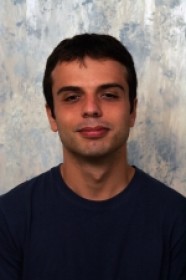
10:00 am to 12:00 am
Event Location: NSH 1305
Abstract: This thesis presents a series of planners and algorithms for manipulation in cluttered human environments. The focus is on using physics-based predictions, particularly for pushing operations, as an effective way to address the manipulation challenges posed by these environments.
We introduce push-grasping, a physics-based action to grasp an object first by pushing it and then closing the fingers. We analyze the mechanics of push-grasping and demonstrate its effectiveness under clutter and object pose uncertainty. We integrate a planning system based on push-grasping to the geometric planners traditionally used in grasping. We then show that a similar approach can be used to perform manipulation with environmental contact in cluttered environments. We present a planner where the robot can simultaneously push multiple obstacles out of the way while grasping an object through clutter.
In the second part of this thesis we focus on planning a sequence of actions to manipulate clutter. We present a planning framework to rearrange clutter using prehensile and non-prehensile primitives. We show that our planner succeeds in environments where planners which only use prehensile primitives fail. We then explore the problem of manipulating clutter to search for a hidden object. We formulate the problem as minimizing the expected time to find the target, present two algorithms, and analyze their complexity and optimality.
Committee:Siddhartha S. Srinivasa, Chair
Matthew T. Mason
Christopher G. Atkeson
Tomas Lozano-Perez, Massachusetts Institute of Technology
